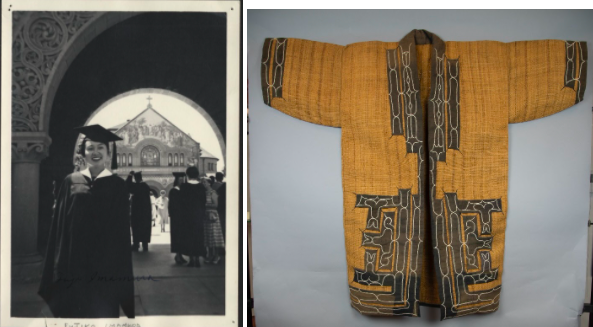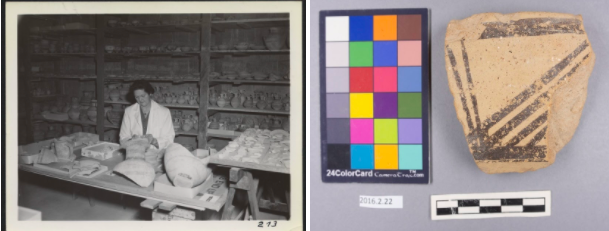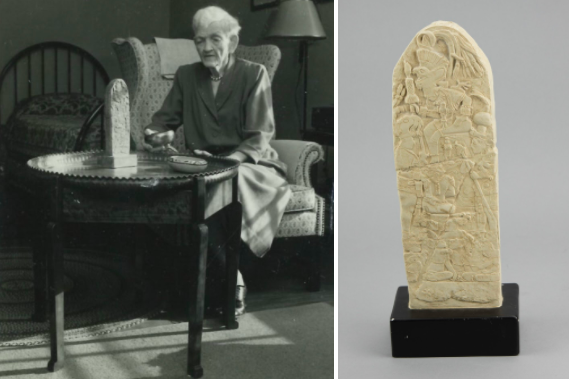The focus of this year’s exhibition at the Stanford University Archaeology Collections (SUAC) will focus on tracing the role that women have played in collecting, making or donating objects to SUAC. The exhibition aims to “give back the voice to women who donated to Stanford collections” through exploring biographical information of late 19th and 20th century female donors.
The exhibition will be presented entirely online, which has provided researchers with the opportunity to expand their work beyond a one-time exhibition and turn the information they find into a long-lasting research project studying their subjects’ jobs, publications, schooling and their personal relationships.
The project, dubbed Women in Provenance, is spearheaded by Christina Hodge, the curator and collections manager of SUAC, which houses over 100,000 objects. According to Hodge, the museum is working to make the collection more accessible to students, community members, faculty and researchers.

The inspiration for focusing on womens’ roles in bringing objects to SUAC came from an inventory Hodge and her colleagues completed last summer. As they were entering records into their database, Hodge and her colleagues found different women’s names popping up often in their collections and wanted to learn more about their lives.
“It fell into our goals as a collection to tell different stories about where museums come from, where archaeology and anthropology come from, get a better idea of why we have what we have and don’t take our collections for granted,” Hodge said.
She is also working with research assistant Pauline Arnoud ’24, to follow national trends of examining the origin of objects in museums and the role that local communities played in bringing those objects to museums.
Over the past 20 years, there has been a push from outside organizations and groups such as Native Americans and other indigenous and immigrant communities who want to know “how objects in museums ended up there because it’s their heritage,” Hodge said.
“You have to consider — are you the right place for these collections? Who should be taking care of these collections? Who should be telling stories about these collections? Who shouldn’t be making decisions about these collections?” Hodge said.

Because museum collections often include important aspects of people’s history and culture, and Hodge said it is important to “not take it for granted that museums are the right place or that curators on their own are the right people to speak for these objects which are really participants in heritage and histories.”
The exhibition’s virtual nature enabled Hodge to create a more comprehensive dataset containing the backgrounds of women who brought objects to SUAC.
“We want to create a dataset that can then be used and put out into the world for other researchers to research the women in our collections in a very deep way and perhaps be a model for future research,” Hodge said.

Photograph of artist M. Louise Baker sitting by her model of Stela 12 in 1959. At some point, Stanford bought a copy of this model for its archaeology teaching collections. (Photo courtesy of the Penn Museum, Image 5604)
Creating and researching virtually presented both challenges and opportunities for Hodge. She said that she initially struggled to figure out how to best digitize information and make sure the exhibition has good photographs of objects. However, Hodge said she’s learned a lot about digital humanities, data practices and ethics in the process. She is also exploring a potential partnership with the Stanford library to conduct 3D scans of objects for future exhibits.
Veronica Jacobs-Edmondson, collections assistant at Stanford Archaeology Collections, also acknowledged the difficulties of putting together a virtual exhibit.
“You gain so much insight from being around the objects, but that’s just not possible right now,” she wrote to The Daily.
However, like Hodge, Jacobs-Edmondson has creatively approached the virtual environment to display information in a way that physical exhibits do not allow for.
“The student curators have to tell a story about the objects’ histories without the objects, which means that we can have more robust and engaging interpretive elements in the virtual exhibits that isn’t possible in physical exhibits due to space constraints,” she wrote.
For Arnoud, the virtual working environment is beneficial as it presents an opportunity to get help and advice more readily.
“People are always willing to help and it’s pretty easy to set up a Zoom call,” she said. “It’s not like you have to walk to somebody’s office, you can just schedule a Zoom and not have to go anywhere and you can just do it from your bedroom.”
According to Arnoud, the virtual nature of the exhibit may provide for a unique opportunity to present the stories of these women. She thinks the virtual exhibition will allow for more independent exploration of the women’s biographies.
“People walking through a museum have to follow the story in one specific way that the curators decide, but with virtual exhibits, I could really imagine people kind of choosing their own path and exploring what they want to explore and the order that they want to explore it in,” she said.
